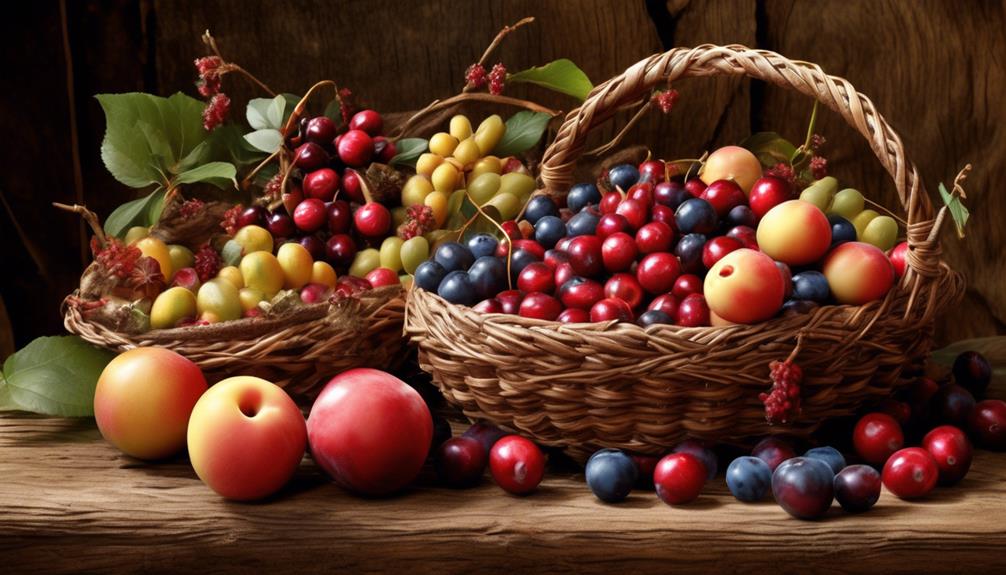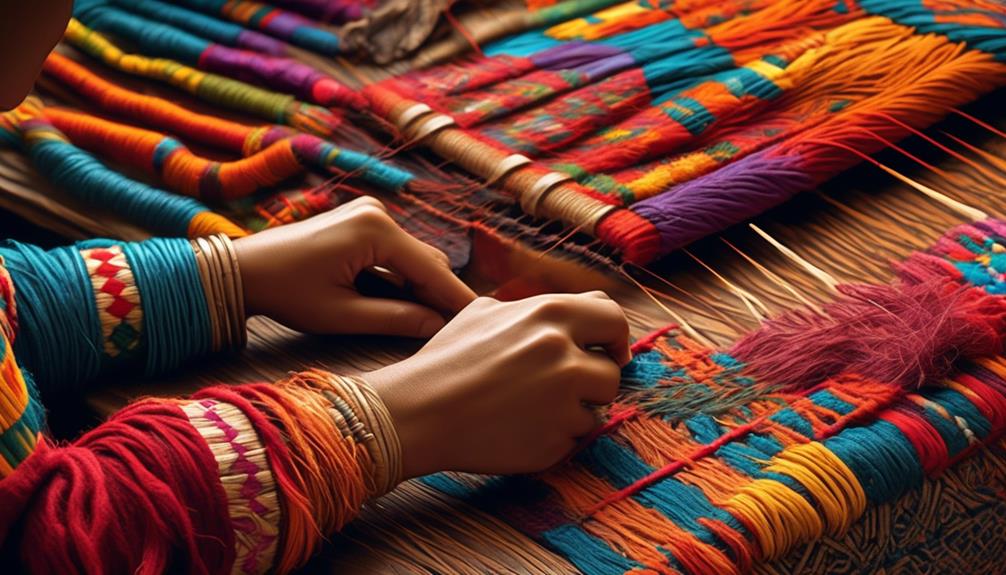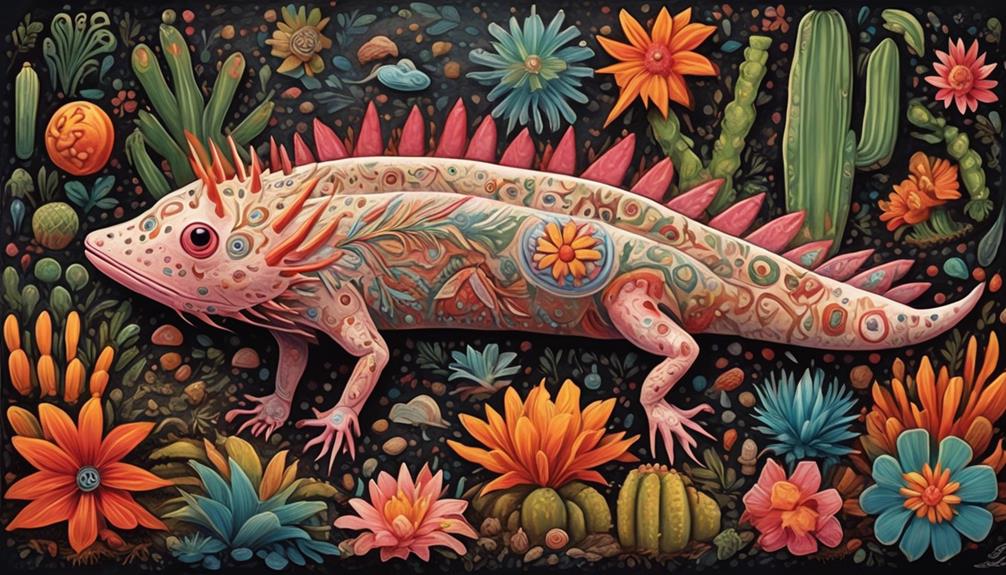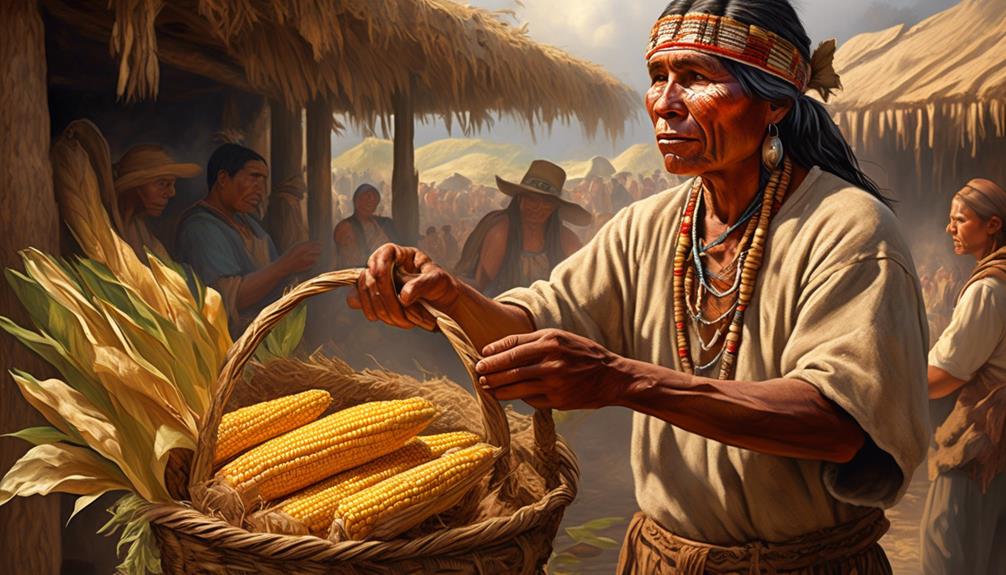Have you ever paused to consider the diverse range of fruits that are indigenous to North America? While journeying through the different terrains of this continent, we uncover a bounty of fruits that have been cultivated and cherished for countless generations.
But what exactly are these indigenous fruits, and how have they shaped the cultural, culinary, and nutritional landscapes of North America? Join us as we embark on a journey to unravel the fascinating story behind the fruits that have deep roots in this land.
Key Takeaways
- Indigenous communities in North America have cultivated and domesticated a variety of fruits for thousands of years.
- Native fruits hold deep cultural and spiritual significance in indigenous communities, being used in ceremonies, rituals, and medicinal practices.
- Indigenous fruits offer a plethora of nutritional benefits, being rich in vitamin C and antioxidants that aid in disease prevention and foster emotional connection and gratitude.
- Native fruits have influenced culinary traditions, inspiring unique and flavorful dishes and being used in both traditional and contemporary recipes.
The History of Indigenous North American Fruits
Exploring the history of indigenous North American fruits reveals a rich tapestry of cultivation, trade, and cultural significance woven into the fabric of the continent's diverse ecosystems. The history of these fruits is deeply intertwined with the migration patterns of indigenous peoples.
Over thousands of years, indigenous communities have cultivated and domesticated a remarkable array of fruits, adapting them to a wide range of climates and ecosystems across North America. This intricate history is marked by the movement of different tribes and nations, each carrying and exchanging seeds and knowledge of horticulture as they migrated across the continent.
The migration patterns of indigenous peoples greatly influenced the spread and cultivation of fruits such as cranberries, blueberries, and pawpaws. The oral traditions and historical accounts of these communities provide valuable insights into the cultivation and uses of these fruits, offering a window into the deep cultural and spiritual connections that indigenous peoples have with their environment.
Understanding the history and migration patterns of indigenous North American fruits is essential to appreciating their cultural and ecological significance.
Cultural Significance of Native Fruits
The history of indigenous North American fruits intricately weaves together the cultivation, trade, and cultural significance of these fruits, providing a rich tapestry that offers valuable insights into their deep cultural and spiritual connections.
Native fruits hold significant cultural importance in North American indigenous communities. They're deeply intertwined with cultural traditions and have been utilized in various traditional practices for centuries. These fruits have been used in ceremonies, rituals, and celebrations, symbolizing the spiritual connection to the land and the natural world.
Their traditional uses extend beyond culinary purposes, playing crucial roles in medicinal practices and as offerings in spiritual ceremonies. The cultural significance of these fruits also extends to their role in storytelling and folklore, where they often symbolize resilience, strength, and the interconnectedness of all living beings.
Understanding the cultural significance of these native fruits provides a window into the rich tapestry of indigenous traditions and highlights the deep reverence and respect for the natural world that has been passed down through generations.
Nutritional Value of Indigenous Fruits
Examining the nutritional profile of indigenous fruits provides valuable insights into their health benefits and their potential contributions to a well-rounded diet. Indigenous fruits offer a plethora of nutritional benefits, making them an essential part of a balanced and healthy lifestyle. When considering the health implications of consuming indigenous fruits, it's evident that these natural treasures provide a wide range of essential nutrients that can positively impact overall well-being.
- Enhanced Immunity: The rich vitamin C content in indigenous fruits, such as cranberries and wild blueberries, can bolster the immune system, helping to ward off illnesses and infections. This can lead to a sense of vitality and resilience that's invaluable for maintaining optimal health.
- *Emotional Connection*: Knowing that we can strengthen our immune system by consuming indigenous fruits can evoke a sense of empowerment and connection to the land, fostering a deep appreciation for the natural world.
- Disease Prevention: The diverse array of antioxidants found in indigenous fruits, like chokecherries and elderberries, may aid in reducing the risk of chronic diseases, including heart disease and cancer. This underscores the profound impact that these fruits can have on long-term health and wellness.
- *Gratitude and Respect*: Understanding the disease-fighting potential of indigenous fruits can evoke a profound sense of gratitude and respect for the wisdom of traditional diets and the natural abundance of North America.
Impact of Native Fruits on Culinary Traditions
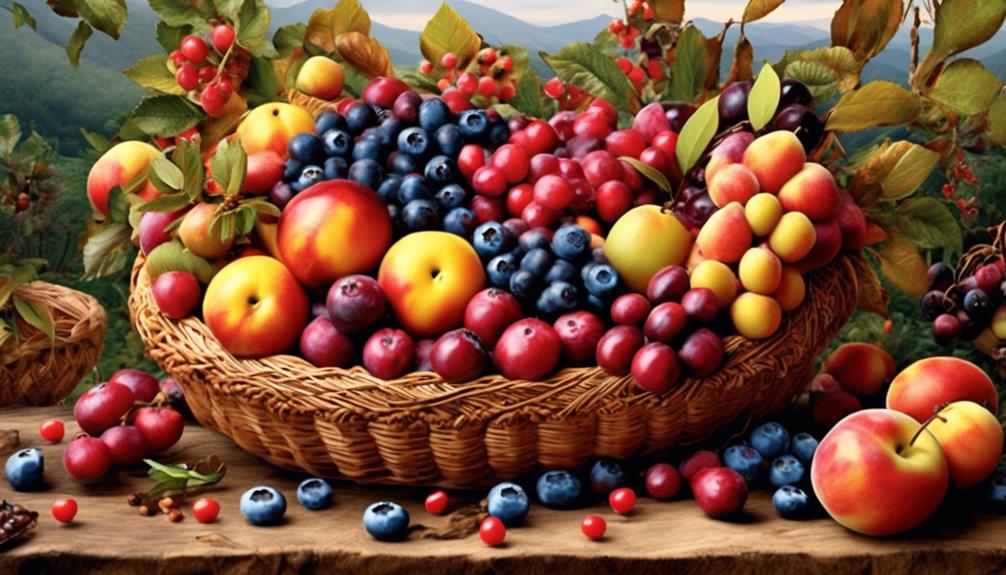
Understanding the nutritional benefits of indigenous fruits lays a foundation for appreciating their profound impact on culinary traditions, shaping the way these fruits are incorporated into our diets and culinary practices.
The rich diversity of native fruits has played a pivotal role in culinary innovation, inspiring chefs and home cooks to create unique and flavorful dishes. Traditional recipes have been influenced by the availability of indigenous fruits, leading to the development of signature dishes that reflect the cultural heritage of Native American communities. For example, blueberries, cranberries, and raspberries have been integral to the creation of jams, sauces, and desserts in traditional Native American cuisine. The tartness of these fruits adds depth and complexity to savory dishes as well, showcasing their versatility in culinary applications.
Furthermore, indigenous fruits have sparked creativity in modern cuisine, with chefs incorporating them into contemporary recipes that celebrate and honor the heritage of North America. The impact of native fruits on culinary traditions is undeniable, and their significance continues to be celebrated in the culinary world.
Conservation Efforts for Native North American Fruits
Active efforts are underway to conserve and protect the diverse array of native North American fruits, ensuring their continued existence for future generations.
- Our conservation efforts aim to safeguard the rich biodiversity of native North American fruits, which have been an integral part of the continent's ecosystems for centuries.
- By protecting these fruits, we aren't only preserving their genetic diversity but also safeguarding the habitats and ecosystems that rely on them for sustenance. This interconnectedness highlights the critical importance of biodiversity protection in our conservation endeavors.
- It's crucial to recognize the cultural and historical significance of these fruits to Indigenous communities. They've sustained and enriched traditions, diets, and medicinal practices for generations. The conservation efforts aren't just about protecting fruits; they're about honoring and respecting the heritage and knowledge of Indigenous peoples.
Our commitment to conservation efforts for native North American fruits is driven by the understanding that these fruits are irreplaceable components of our natural and cultural heritage. By protecting them, we're contributing to the preservation of biodiversity and the continuation of invaluable cultural practices.
Frequently Asked Questions
Can I Find Indigenous North American Fruits in Grocery Stores and Markets?
Yes, indigenous North American fruits are available in some markets, reflecting their cultural significance. Preservation efforts have increased their availability.
These fruits, including cranberries, blueberries, and cherries, aren't only delicious but also have historical and cultural importance. By supporting their availability in markets, we contribute to the preservation of these fruits and the traditions associated with them.
Are There Any Traditional Medicinal Uses for Indigenous North American Fruits?
Traditional medicinal uses for indigenous North American fruits are diverse and significant. For example, wild blueberries have been used by indigenous communities for their healing properties. They're known for their antioxidants and have cultural significance in traditional medicine.
These fruits were used to treat various ailments, including stomach issues and inflammation. Exploring the historical and cultural context of indigenous fruits reveals valuable insights into their traditional medicinal uses.
What Are Some Lesser-Known Indigenous North American Fruits That Are Not Commonly Discussed?
We've discovered several lesser-known indigenous North American fruits with rich culinary uses and nutritional benefits. These fruits hold significant cultural importance and have sparked preservation efforts.
Learning about these fruits can deepen our understanding of indigenous traditions and the diverse bounty of North American ecosystems. Exploring their culinary potential and nutritional value can help us appreciate and integrate these fruits into modern cuisine while honoring their cultural significance.
Are There Any Specific Regions or Tribes That Have a Particularly Strong Connection to Certain Indigenous North American Fruits?
Tribal connections to fruits in North America are deeply rooted in tradition. Fruit cultivation is intertwined with indigenous regions, and traditional harvesting methods reflect a rich cultural heritage.
Understanding the specific tribes and their strong connections to certain fruits enhances our appreciation for the significance of these foods. This knowledge fosters a deeper respect for the heritage and traditions of Native American communities, highlighting the importance of preserving these cultural connections to the land.
How Have Indigenous North American Fruits Influenced the Development of Modern Hybrid Fruits and Agricultural Practices?
Influenced by indigenous North American fruits, modern hybrid fruits and agricultural practices reflect a rich cultural significance. Through hybridization practices, we've expanded the diversity of fruits while honoring their historical roots.
These fruits haven't only shaped agricultural development but also carry a profound legacy of resilience and adaptability. Understanding this influence deepens our appreciation for the interconnectedness of past and present, inspiring us to continue evolving sustainable agricultural practices.
Conclusion
In conclusion, it's fascinating to learn that over 300 species of fruits are indigenous to North America, including blueberries, cranberries, and cherries.
These fruits have played a vital role in the cultural and culinary traditions of Native American communities for centuries.
Additionally, the nutritional value of these fruits is significant, with blueberries, for example, being packed with antioxidants and vitamins.
It's important to continue conservation efforts to preserve these valuable native fruits for future generations.
Mary is a passionate writer who brings creativity and a fresh perspective to our team. Her words have the power to captivate and inspire, making her an essential contributor to our content. Mary’s commitment to storytelling and dedication to promoting Indigenous culture ensures that her work touches the hearts of our readers. We’re fortunate to have her as part of our team.
